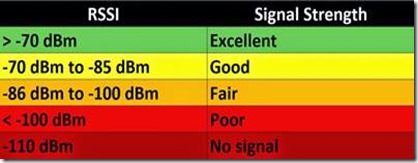Making Sense of Signal Strength/Signal Quality Readings for Cellular Modems
Posted by Stephen Mammen
The first step in any successful cellular modem installation is verifying that the modem has a good connection back to the carrier network. This is especially helpful in that first "fingers crossed" moment when you are going live with a modem; good signal strength and signal quality makes modem deployment a smoother process.
While some graphical and qualitative ratings are provided by a cell modem's status page (e.g. green status/"Excellent"/"Good", red status/"Poor"/"Weak", etc.), more often one sees a numerical reading in dB or dBm. What do all these acronyms and negative numbers mean? This post aims to help with those questions.
Let's begin by defining our main acronyms of interest (along with the cellular technologies they are most useful for in parenthesis). There are certainly more measurements used in the industry, but let's keep it simple... signal strength and signal quality.
Signal Strength
- RSSI - Received Signal Strength Indicator (3G, CDMA/UMTS/EV-DO)
- RSRP - Reference Signal Received Power (4G LTE)
Signal Quality
- ECIO (Ec/Io) - Energy to Interference Ratio (3G, CDMA/UMTS/EV-DO)
- RSRQ - Reference Signal Received Quality (4G LTE)
- SINR - Signal to Interference-plus-Noise Ratio (4G LTE)
It is important to identify what cellular technology you are using when examining these metrics.
For 3G cellular connections, RSSI and EC/IO is what to look at.
For 4G LTE, RSRP, RSRQ, and SINR are the metrics to check.
Regardless of cellular technology, for a given installation to perform to expectations, both signal strength and quality should be optimized in the "Excellent" category. If you are suffering from poor signal, consider moving the cellular device to a new location and survey the area for interfering RF components. If simply relocating your device is not practical, it may be necessary to explore a new antenna configuration. As we've covered previously though, exercise caution or consult us on this topic as bigger isn't always better.
This information should be your first line of defense when troubleshooting cellular performance issues. Give INS a call for all your cellular gateway needs!
Taken From: http://blog.industrialnetworking.com/2014/04/making-sense-of-signal-strengthsignal.html





1 comment:
great post , thank u for your blog visit us fiber optic solutions in dubai
Fiber optic network cabling
Post a Comment